8 Best Hacks for Homeschool Gardening
Now that it’s warming up outside, you may be thinking about starting to do a little homeschool gardening. If you’ve been interested in gardening as part of your summer learning, I want to encourage you that it’s well worth the time and money you will invest.

The educational opportunities in and of themselves are reason enough, but gardening also has many other benefits. Your family will naturally eat more healthy foods, and you will probably also save a little money on your grocery bill.
Benefits of Homeschool Gardening
Besides the obvious benefit of your child learning about plants and plant growth, homeschool gardens:
- Cultivate and offer experience for life lessons such as patience, nurturing and faithfulness, life cycle, reaping what you sow, and much more!
- Teach in-context science lessons such as PH levels, photosynthesis, etc.
- Teach applied mathematics such as calculating plant spacing using a square foot method or quantifying harvest and yield.
- Enhance your homeschool day by offering constructive break time to tend the garden.
- Add valuable learning time and “something constructive to do” during the summer months even if you do not homeschool through the summer.
- Enhance your health and offer healthy foods grown organically in your own backyard; with success, it can supplement your food supply.
- Offer unlimited science lessons and experiments for botany.
- Multiply your unit study and field study opportunities for various gardening and agriculture topics.
- Increase possible field trip ideas to complement your learning.
- Enhance biography studies on various leaders in agriculture and plant science such as George Washington Carver or Gregor Mendel (an Austrian monk who discovered the basics of genetics through his garden experiments).
- Offer plenty of opportunities for problem-solving. Kids will have to figure out how to keep rabbits out or how to protect tomatoes from an unexpected late frost. Slow your lifestyle pace down offering time for peaceful reflection.
- Offer the perfect observation study on the environment or nature. There is no better way to understand your environment and learn about animals and their behaviors in your own backyard than to have and tend a garden. You can study everything about your little ecosystem-weather, insects, food chains, and more!

Notice I added tend to the last reason. That’s because getting to know your backyard ecosystem takes time. It will require faithful dedication and consistency. During the course of at least one year, seeing all the seasonal changes, your child will get the best understanding of the plants and animals in your neighborhood.
Weather study is also a factor because a good gardener will have to watch the weather forecast! Understanding storms, rain, drought, and more (and how they will affect your plants), will enable your homeschool garden to grow to completion.
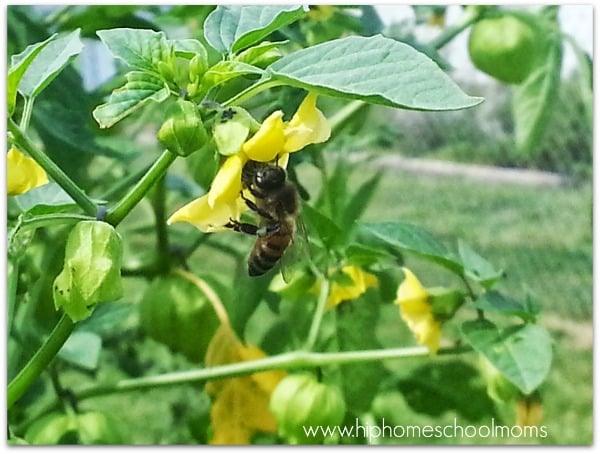
Hacks for Starting a Homeschool Garden
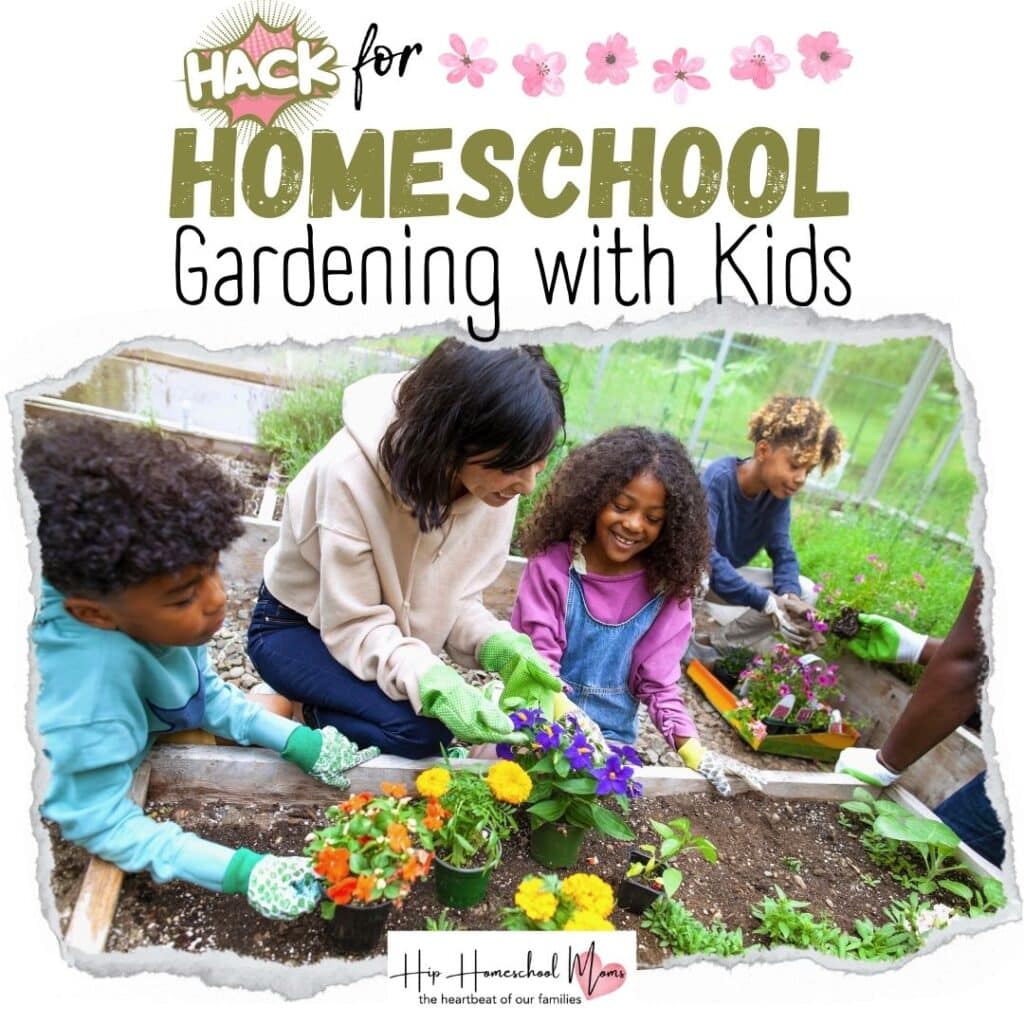
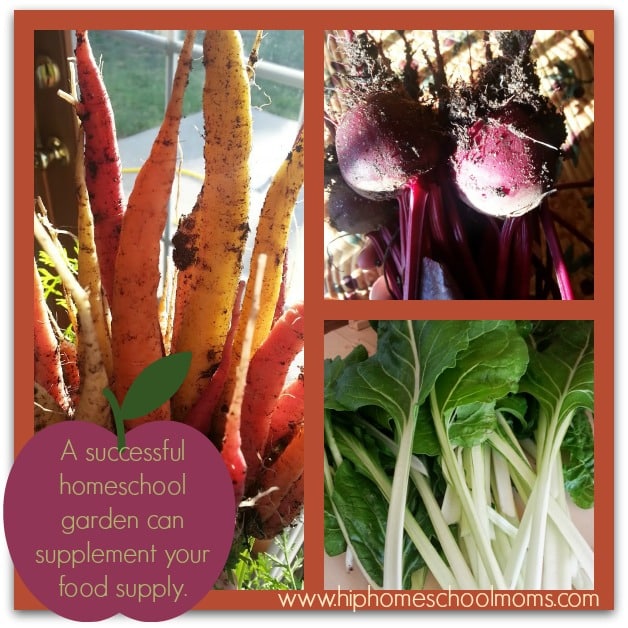
Lessons, Printables, and Unit Studies for Homeschool Gardening
- Free Garden Planner for Kids
- Garden Notebooking Pages
- LOTS of Life Cycle Printables from Only Passionate Curiosity – Corn, apple, pumpkin, bean, sunflowers, and more!
- Starting Seeds Indoors with free printable from The Homeschool Scientist
- Spring Bulb Identification Cards | Wildflower Ramblings
- Observing Seeds – with free printable from The Homeschool Scientist
- Planting A Rainbow Literature & Science Lesson | Wildflower Ramblings
- Tips for Gardening With Kids | Teach Beside Me
- Add in some science with this 3D Plant Cell Diorama Craft
- Check out these 14 Books about Gardening for Kids
What Homeschool Gardening Hacks Do You Have?
Share with me any garden ideas you have for this year. How do you get your kids involved? If you don’t have a homeschool garden yet, what is holding you back?
Featured Image by Photo by Maggie at Pexels

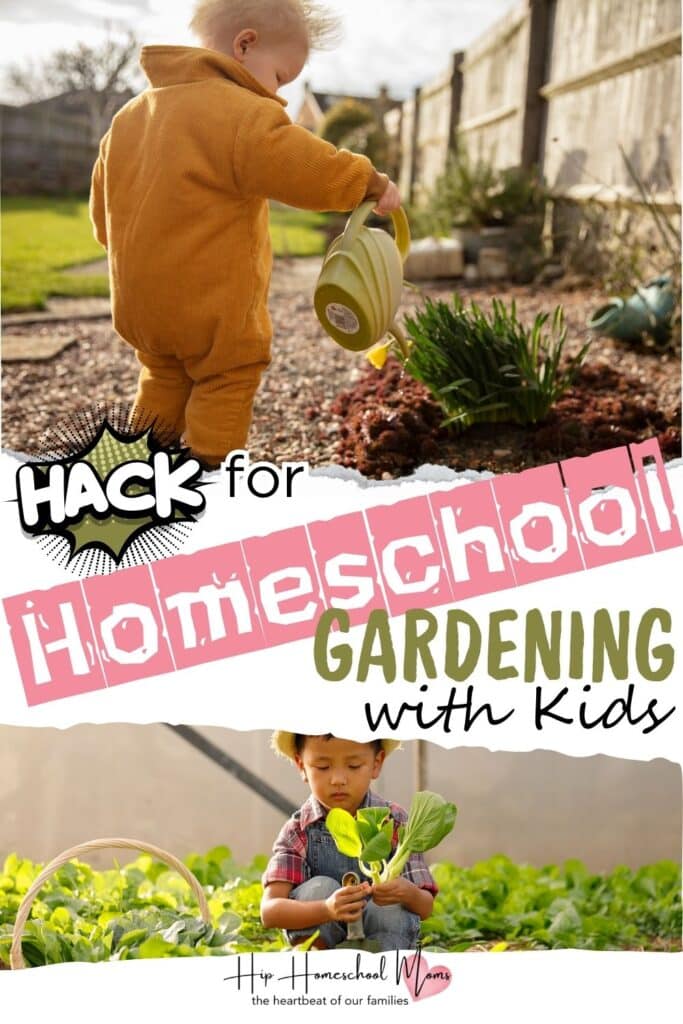
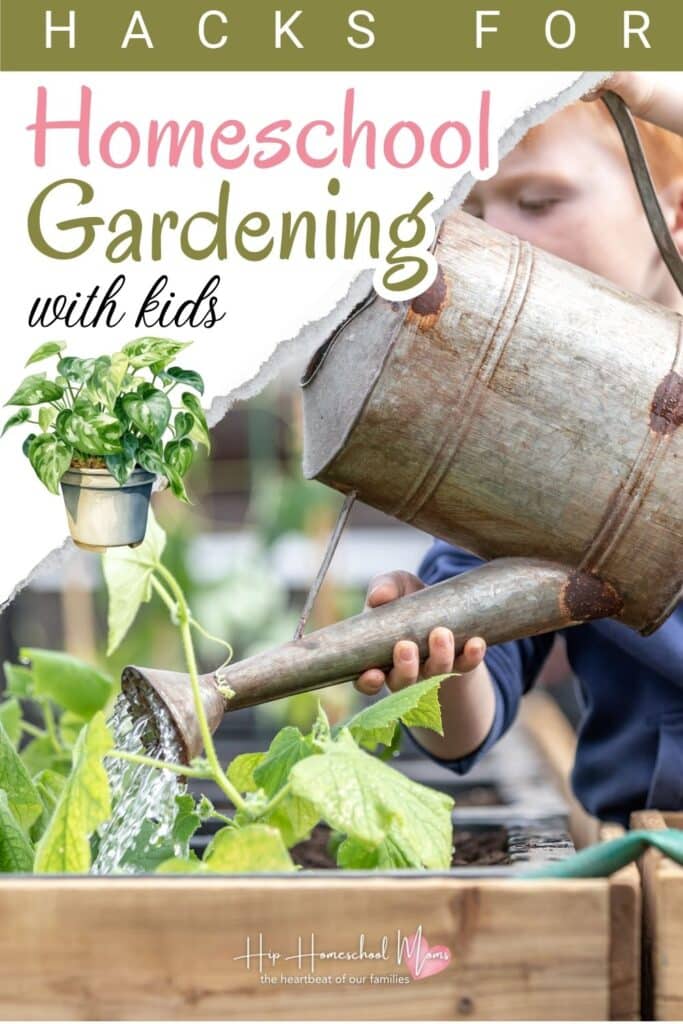
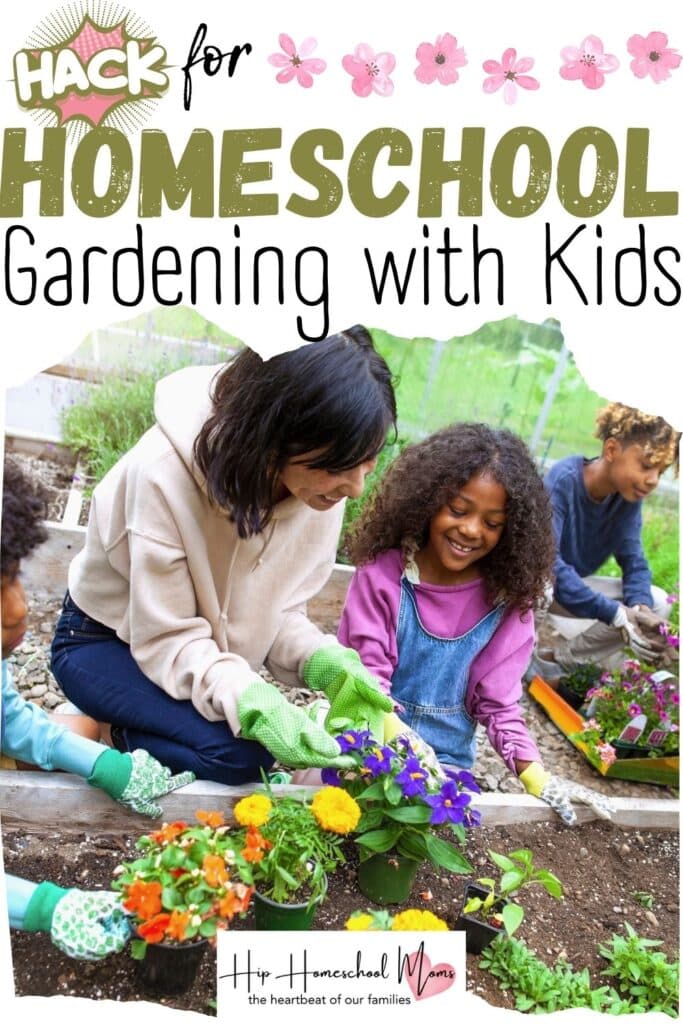


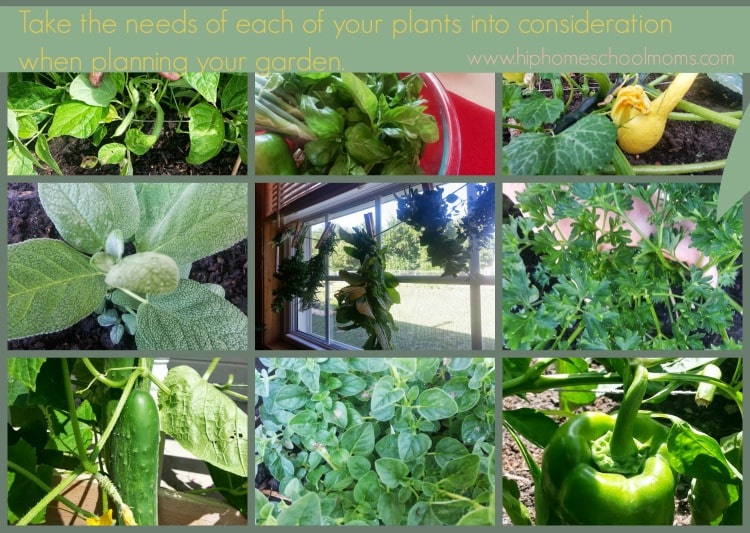

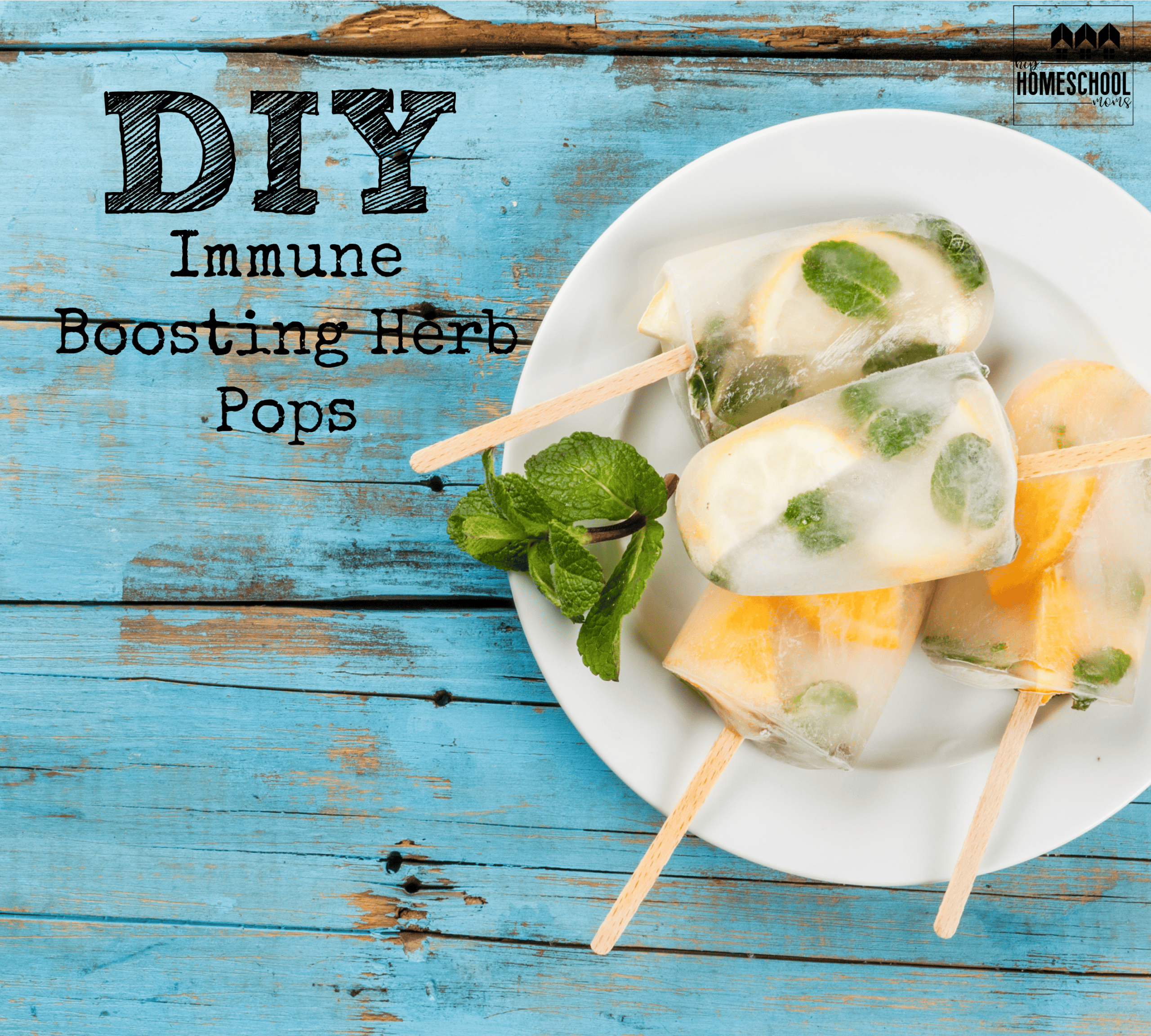
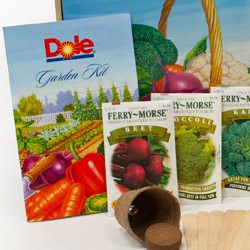
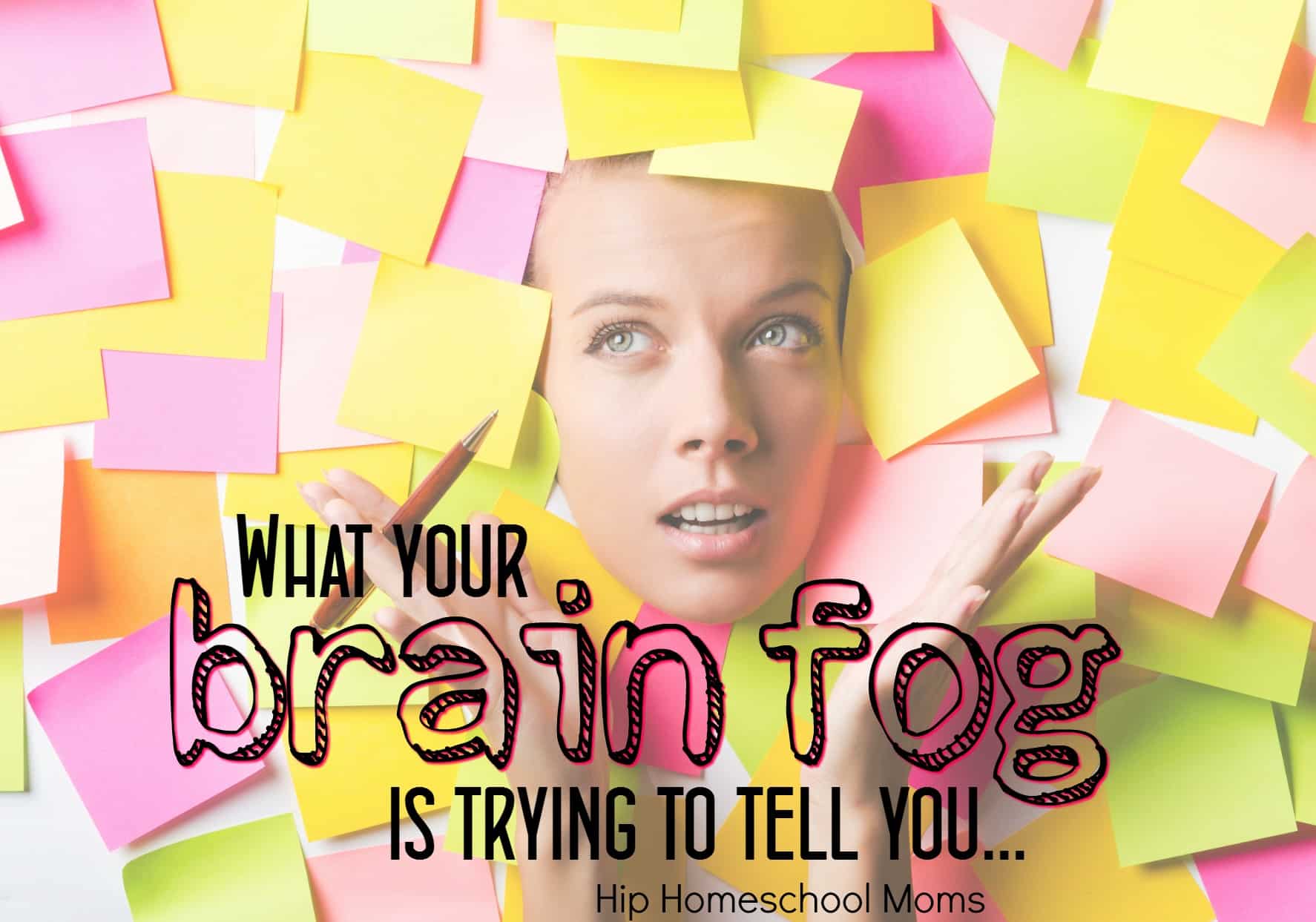
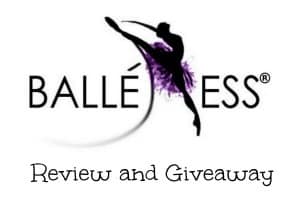

Some great ideas and resources~Thank you so much!!!
You’re welcome!
Great resources here, Stephanie! i’ll be pinning this to my gardening board. 😉 Thank you for including my link.
You are welcome! It was a lovely message- something we learn when we garden.
I think you have many good ideas for gardening and homeschool gardens. One type of garden that my family has planted is the butterfly/hummingbird garden. We planted it where we can see it from the front window and it has brought much joy to all of our lives. We have learned many, many things about butterflies, caterpillars, chrysalids, wasps (which hunt caterpillars for food for their young), butterfly host plants, and nectar plants for both hummingbirds and butterflies.
Attracting birds, butterflies, and other wildlife are great reasons to garden!
Thank you for all this wonderful information and the lovely resources 🙂 We have been adding gardening to our summer and fall curriculum since the beginning of homeschooling, about 7 years ago! I have regretted nothing from it because, although I didn’t realize everything my children were getting from gardening alongside me at the beginning, I am seeing it now. Being a part of 4-H now and my children getting excited to grow what they are going to enter at fair is beyond exciting.! 🙂
– Not to mention that at 9 and 11 they are beyond ready to start planting and planning their own part of the garden!!! 🙂 –
This year they will be starting from seeds all the way up! I’m excited and will be using quite a few of the resources you shared here! Thank you again Stephanie 🙂 🙂 🙂
Thank you for this wonderfully thorough post about homeschool gardening <3 The way that you have broken down each aspect that people should make sure and consider is great! If the truth be known, I wish I had read something like this before starting gardening and including it with homeschool lessons!
I say that because there have been many times that I had this big vision for that year's garden. I have purchased the plants and/or seeds and away I go! Lol! I then find out that I did not properly plan the spacing of the plants, or that there are certain plants that do better when planted together and so on. The positive of this plant first and think later is that my children have a broader knowledge going forward, into the next year, of what to do and what we should plant the following year. The knowledge gained from my mistakes have made for successes <3
This year we were finally able to plan our garden for the year and my children picked most of the plants! It helps because of all my children have learned and they will be able to use the plants that they grow for their submission to 4-H this year! That is a win-win, along with the knowledge they are gaining that they will use into adulthood. My children have a firm understanding of where their food comes from and what they need to do to grow that food! 🙂 🙂 🙂